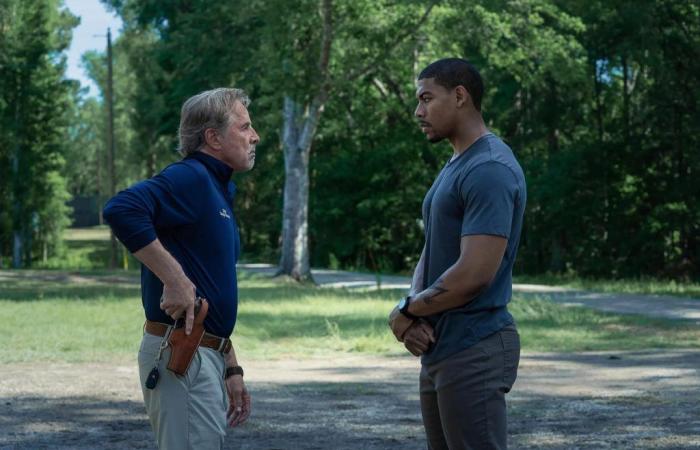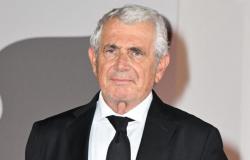Rebel Ridge begins with the violent arrest of a black man by two white police officers: violently hit by a service vehicle while on his way to the local court, Terry Richmond (Aaron Pierre) is apprehended for a spurious reason and is seen confiscate the $30,000 he was carrying on him. Problem: this sum must be deposited as quickly as possible to pay his cousin’s bail, on the eve of a dangerous transfer to federal prison. Humiliated by corrupt police and justice, Terry decides to obtain compensation himself by going to recover his dues. If the first minutes of the film seem to fit into the context and fallout of Black Live Matters (and, more broadly, the systematic racism demonstrated by American police forces), the rest of the film refrains from any reference or an explicit nod to political news. Through the archetypal simplicity of the scenario and the abstract nature of the topography, which makes the town of Shelby Springs, where the story takes place, a sort of open-air prison, Saulnier depicts the fault lines of a society where the desire for a return to order now seems irreconcilable with an imperative of social justice.
By painting this pessimistic portrait of a cynical and individualistic America, Rebel Ridge dialogue with the films of S. Craig Zahler, notably Brawl in Cell 99 et Dragged Across Concrete – with whom he also shares one of the secondary actors, Don Johnson, who here plays the role of Sandy Burnne, the crooked chief of the local police. More attached to restoring his hero’s point of view on the world around him, Saulnier nevertheless distinguishes himself from Zahler’s ultraviolent style by a certain restraint in the economy of his action scenes, which are not very spectacular before the last quarter of the movie. From the first sequence, when Terry is apprehended by the police, a slow forward tracking shot tightens the frame on the silhouette of the soldier, lying on the ground, at the moment when he extends his arms so as to touch their edges. This shot reveals a logic of confinement which will continue to be declined by the staging during the first 45 minutes, as an incessant reminder of this inaugural trauma. Overframing, zooms, cramped sets and blocked perspectives: Saulnier here demonstrates a certain inventiveness in the representation of an entirely prison space, illustrating the idea that Terry is “cornered” by the police.
Proof by the image
By making the frame a tool of oppression, Saulnier implicitly develops a reflexive discourse on the role of images, which is confirmed by the central place occupied, in the second part, by the recordings of the images. dashcams of the police. Video automatically launched during an arrest, they constitute proof of police malpractices committed in the region, so much so that Terry seeks to recover them to reveal the offenses committed against him. Helped in his quest by Summer McBride (AnnaSophia Robb), a lawyer aware of police malpractices, the film reconfigures itself as a paranoid thriller: forced by Burnne to leave Shelby Springs after the death of his cousin in prison, Terry goes on the run while investigating the extent of corruption in the region. Condemned to pariah status, the character ends up haunting the secluded corners of the city (the surroundings of the court, a hiding place under a bridge, the back room of a Chinese restaurant). This elusive dimension is precisely the subject of a face-to-face between Terry and the police, where Saulnier makes this struggle of images the secret issue of the ex-soldier’s quest. During the final confrontation, the character uses smoke bombs to transform the parking lot into a real battlefield whose landmarks fade; taking advantage of this interference, he reached a vehicle located just in front of Burnne and started recording a dashcamturning against the police the tools which until then allowed them to impose “its” staging.
If the film therefore demonstrates a good coherence, we can nevertheless regret that it reveals itself to be variously invested depending on the sequences, in particular when it does not depict the head-on opposition between Terry and the police. Comfortable in the register of action and thriller, Saulnier relies on a more expected grammar during the long sequences of exchanges with Summer and the investigation which occupies the second part of the story. Limited to a series of functional reverse shots, these discussion scenes constitute the least convincing part of the film, even if they also serve as a showcase for Aaron Pierre’s inspired interpretation. His restrained playing, unexpected in the context of a actioneris consistent with the lack of showiness in the staging. Rebel Ridge in this respect reconnects with a certain ideal of the B series: a mixture of rigor and modesty nestled at the heart of the great machine of industrial entertainment.






